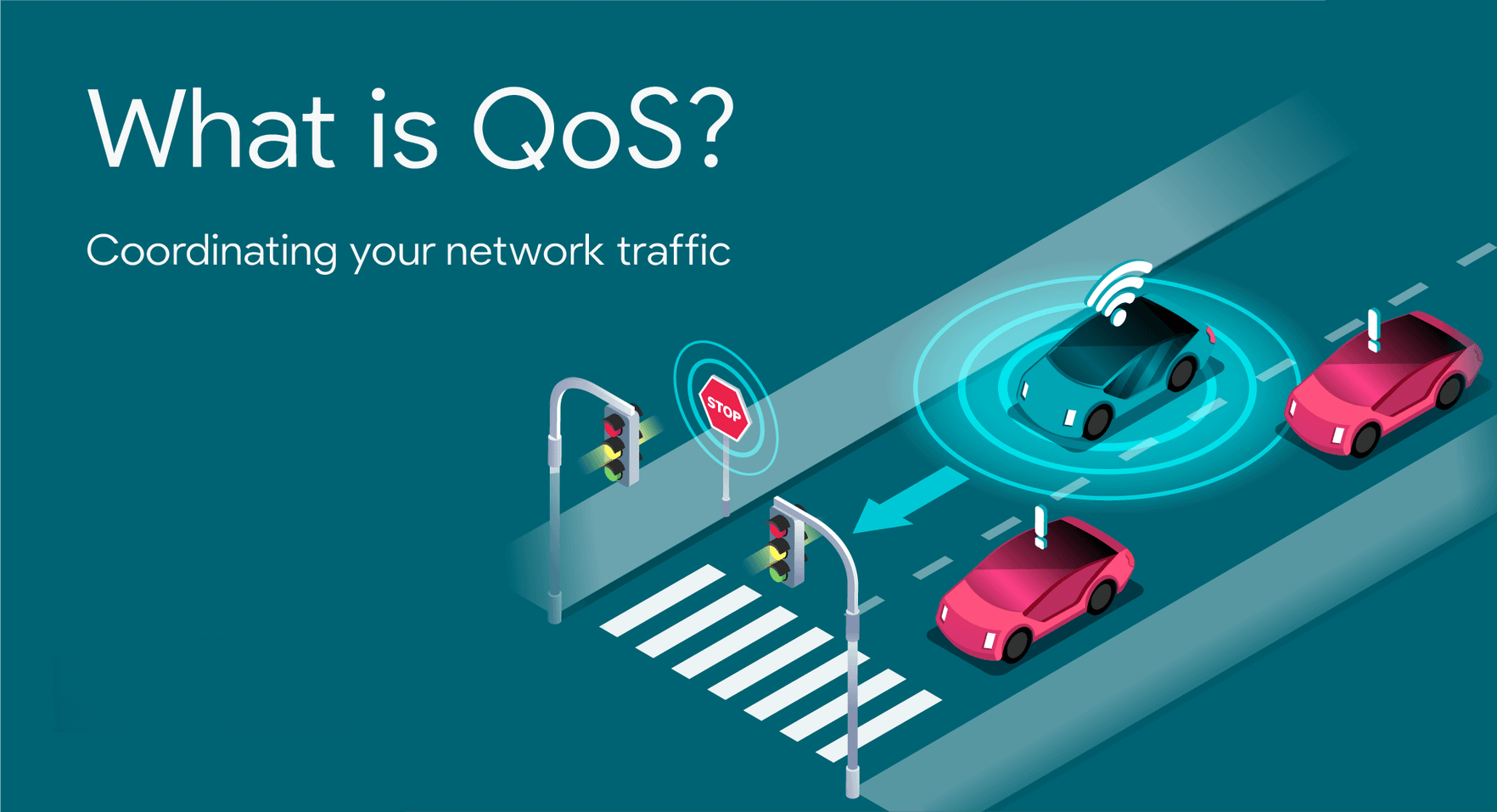Mastering Streaming Quality: Insights into Quality of Service (QoS) Fundamentals
Introduction
In our modern society, digital communication has shaped the way we work, learn, and entertain ourselves. With the ever-increasing volume of network traffic, ensuring communication quality has become more important than ever before. Imagine watching an online live stream with constant buffering or experiencing intermittent voice interruptions during a crucial meeting - these issues are largely attributed to the quality of network service. This brings us to a crucial concept: Quality of Service (QoS), which serves as the cornerstone for ensuring data transmission quality and a smooth user experience.
The importance of QoS extends beyond improving the quality of streaming media; it is also vital for the entire digital communication ecosystem. Whether in collaborative software for remote work or in the Internet of Things (IoT) connecting billions of devices, QoS plays a critical role. It ensures efficient management and allocation of resources, enabling critical tasks to access the necessary network bandwidth and reducing latency to provide a more stable and reliable communication channel.
What is QoS (Quality of Service)?
QoS, or Quality of Service, refers to a collection of network technologies and management strategies aimed at ensuring performance standards for specific data streams, such as video and voice calls, within a network. By prioritizing network traffic, reserving resources, and controlling flow, QoS ensures smooth transmission of important data even in congested networks, reducing issues like latency, packet loss, and jitter, thereby enhancing the end-user experience.

In digital communication, QoS plays a crucial role. Networks do not always have unlimited resources, especially during periods of increased data demand. By implementing QoS policies, network administrators can ensure that critical business operations, such as cloud computing services, online meetings, and streaming media, receive the necessary network performance. Additionally, QoS helps maintain network stability and reliability during peak traffic periods, avoiding service disruptions and providing a continuous user experience.
Understanding the definition of QoS and its role in networks and digital communication allows us to recognize that it is crucial for both enterprises and individual users to ensure efficient and reliable data transmission. High-quality QoS not only enhances user satisfaction but also strengthens the competitiveness of businesses and improves work efficiency.
Key Components of QoS
To effectively implement QoS and maximize its impact in a network, understanding its key components is crucial. QoS typically includes the following aspects:
Bandwidth Management
Bandwidth management is one of the core components of QoS, involving the allocation and control of network resources. By prioritizing data flows and implementing bandwidth limitations, network administrators can prevent network congestion and ensure critical applications receive the necessary resources, thereby balancing data transmission across the network and improving overall efficiency and performance.
Latency
Low latency is crucial for many network applications, such as VoIP (Voice over Internet Protocol) and online gaming, to provide a good user experience. QoS reduces latency by minimizing the time it takes for packets to traverse the network, ensuring that packets reach their destination quickly.
Jitter
Jitter refers to the inconsistency in packet arrival times within a network, which can cause video instability and audio interruptions in streaming media applications. QoS manages and reduces jitter by smoothing out fluctuations in network traffic, ensuring a smoother and more consistent media streaming experience.
Packet Loss
Packet loss significantly impacts the quality of network communication, especially during important data transfers. QoS strategies optimize data transmission in congested network conditions to minimize packet loss during the transmission process.
Challenges in Implementing QoS
While QoS offers significant advantages, there are several challenges in its implementation, including:
Technical Complexity: Some advanced QoS features require highly complex configurations and ongoing management. This may require network administrators to possess specialized knowledge and skills. To overcome these technical challenges, team skills can be enhanced through training and expansion. Additionally, leveraging automation tools and Software-Defined Networking (SDN) technology can simplify the configuration and management of QoS, reducing the complexity of manual operations.
Cost and Scalability: Deploying QoS may require investments in hardware or software, especially when upgrading old systems to support new QoS standards and technologies. Furthermore, ensuring that QoS policies can be adjusted accordingly as the network expands is a challenge for businesses looking to scale their networks. When considering cost and scalability, it is crucial to plan for the future and select solutions that can adapt to business growth. Regularly assessing and optimizing network infrastructure ensures it can meet evolving demands.
Diverse Network Environments: Implementing QoS may encounter diverse network environments, including different types of network devices, protocols, and applications. This diversity can pose challenges in terms of consistency and compatibility. To address these challenges, detailed planning and testing are required to ensure that QoS policies function effectively in various network environments. Additionally, maintaining close collaboration with vendors and manufacturers to stay informed about their latest technologies and solutions ensures compatibility and consistency of QoS.
Despite the challenges, a thorough understanding of QoS and its components, combined with targeted solutions, can significantly improve network performance and user experience. Overcoming the issues of technical complexity and cost in QoS can be managed with proper training, the use of automation tools and SDN technology, and by choosing scalable solutions for future needs.
The Future of QoS
In the future development of QoS, two important emerging trends and technologies, namely 5G networks and the Internet of Things (IoT), will have a profound impact on QoS.
5G Networks: The widespread deployment of 5G networks will provide more opportunities for QoS implementation. 5G networks offer higher bandwidth and lower latency, providing better support for real-time applications and high-quality streaming media. This means faster download speeds, lower latency, and more stable connections, resulting in an improved user experience. Additionally, the high bandwidth and low latency of 5G networks provide more room for QoS optimization, making network resource allocation and management more flexible and efficient.
Internet of Things (IoT): As IoT devices become more prevalent, the demand for QoS will continue to increase. IoT devices require stable connections and reliable data transmission to ensure communication and collaboration among various smart devices. QoS plays a crucial role in ensuring the real-time, reliable, and secure transmission of data in the IoT. By optimizing QoS, stable connections and high-quality data transmission can be provided, thereby achieving reliability and efficiency in IoT applications.
The development of these emerging technologies opens up new possibilities for QoS implementation and optimization. Artificial intelligence (AI) and machine learning technologies can automatically adjust network resource allocation and optimize QoS by analyzing large amounts of data and monitoring network conditions in real-time. Virtualization and cloud computing technologies can provide more flexible and scalable network resource management to meet the QoS requirements of different applications and users.
In conclusion, 5G networks and the Internet of Things are two important trends in the future development of QoS. They will provide more opportunities for QoS implementation and optimization, driving the advancement of digital communication. By leveraging these emerging technologies, we can achieve higher-quality digital communication and provide a better user experience.
Conclusion
QoS (Quality of Service) plays a crucial role in ensuring high-quality digital communication. By managing bandwidth, reducing latency, controlling jitter, and minimizing packet loss, QoS provides the capability for stable, reliable data transmission, and optimized user experience.
With the continuous development of technology and the increasing demand for digital communication, QoS holds significant potential and possibilities in future streaming media and networks. Emerging technologies such as 5G networks, the Internet of Things, and artificial intelligence will provide new opportunities for further enhancement and innovation in QoS. These technologies will offer higher bandwidth, lower latency, and more intelligent network management to meet the ever-growing demand for high-quality digital communication.
Tencent MPS Stream is capable of providing efficient, stable, and secure streaming services in terms of QoS, meeting users' demands for high-quality video experiences. You are welcome to Contact Us for more information.

